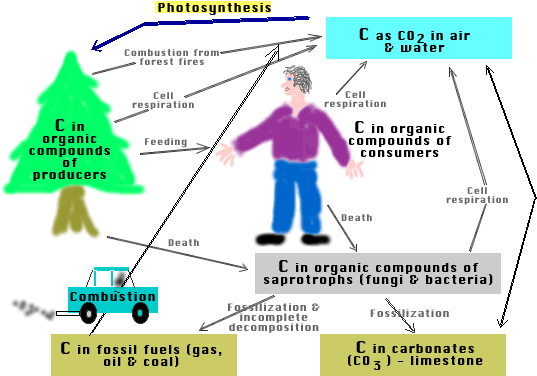
Carbon is cycled through the environment to be used over and over again. The air contains free carbon dioxide which is converted into carbonic acid (H2CO3) when absorbed by water.
Marine organisms utilize the carbonic acids to create their sea shells. The carbonic acid in water can be converted to carbonates which precipitate out to form limestone.
Plants use carbon dioxide to fix carbon into energy-rich organic compounds during photosynthesis. Great quantities of carbon are locked up in the tissues of plants (like wood).
Consumers recycle the carbon in organic compounds obtained from plants and other consumers to make their own organic compounds.
Saprotrophs and detritivores convert the carbon of organic compounds back to carbon dioxide for release into the air.
Incomplete oxidation of organic compounds by the saprotrophs results in formation of oil, gas and coal.
Combustion of these natural fuels releases the carbon as carbon dioxide to the air.
